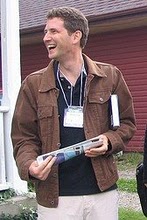Exploring Issues through Story

This weekend, I read Kenneth Oppel’s new book, Half Brother.
I’ve enjoyed his award-winning Silverwing trilogy about bats, and loved his AIRBORN, a Printz Honor book.

Because his career has been grounded in fantasy, it was interesting to see this foray into historical fiction. Half Brother is about a family who adopts a chimpanzee with the idea of raising him as a human and teaching him sign language. Set in 1973, it is surely inspired by the chimp, Koko, who learned to sign and other similar chimps.
Humans and Chimps
This isn’t the first book written about chimpanzees and whether or not they can acquire language. Or books about the similarity between humans and chimps. What I find instructive here is that Oppel joins the conversation and with this book helps shape that conversation; he brings new impetus to the discussion and points it in certain ways.
Books about chimps and humans. Certainly, the classic is Peter Dickinson’s book, EVA. In this book, a girl is about to die, so her brain is transplanted into a chimpanzee. Certainly the physical similarities make it possible in fiction anyway. The story is about the girl waking up and discovering that she has a chimp body; what does that do to her mental processes? Will she still be human, even though she’s in a chimp body?
The question of our humanness, what makes humans unique and special is in question in EVA. And the story’s answer is startling and thought-provoking. (You should really read it.)
What Do you Add to the Conversation?
Oppel comes at it from a different POV, with a different question. What if someone tried to raise a chimp as a human being and teach him language. Some speculate that language is what makes humans different from other species. What is language and how do you define it? This question comes up in Half Brother. Echoing EVA, there’s also the question of the physical body ad what it means for a chimp or human. Oppel adds in the question of how humans treat animals, or animal rights and animal rights activism. He tries to present both sides, but of course, it’s impossible for any novelist to be completely neutral. And why should he be neutral? It’s fiction.
How to Add to the Conversation
For us, when we write, it’s also a reminder that our writing doesn’t stand alone. It stands in the stream of novels and fiction written by our generation. But it also stands in the context of the time line of our culture and the canon of literature of our culture. When you approach a controversial topic, take some clues from Oppel:
Story. Concentrate on the story. Half Brother is the story of two years of Ben Tomlin’s live, from thirteen to fifteen. He very much wants to capture Jennifer’s heart, a subplot that sometimes competes with the chimp story for attention. There’s a subplot with Ben and his dad, with Ben fighting for his dad’s love and attention. In other words, the chimp story is definitely the main plot, but it is counterpointed by the very teenage story of a first love and a search for a parent’s love.
Join the conversation. I don’t know if Oppel was aware of EVA before his wrote this. But certainly, there are other books about animal rights and about what makes us human. This story adds to both conversations as they are played out in our culture’s literature. Don’t repeat the same arguments in similar ways to other books. Find new things to say and new ways for them to play out over the course of a story.
This is the flip side of the most recent post on my own blog. There I talked about how the books you read affect you as an author in terms of style. By that same token what has been written before you becomes a part of what you the author are saying now in terms of content, and by extension, what you are saying now will become part of what someone else will be saying in the future. It is a poor book that strikes no new creative sparks in the minds of its readers. Fantasy is a great medium for exactly that, since there are so many possibilities, and in a fantasy setting they can be made flesh and examined.
Marc Vun Kannon
http://authorguy.wordpress.com